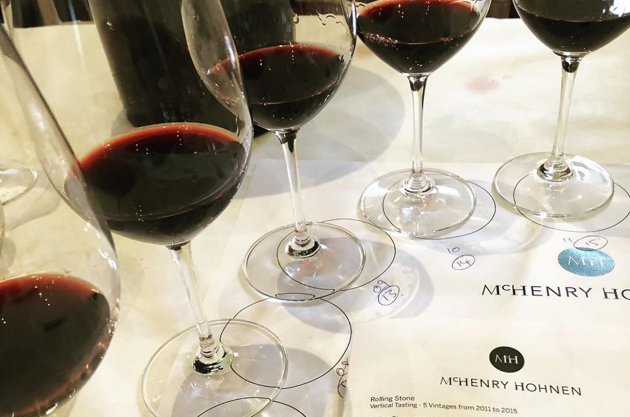This landmark vertical tasting from pioneering Margaret River producer McHenry Hohnen in Western Australia – one of the last before the Covid-19 virus shut down London – challenged the adage about grape vines only hitting their stride after 15 years.
The stellar line-up of 19 wines showcased eight vintages of Chardonnay, Cabernet Sauvignon and the flagship Rolling Stone Bordeaux blend from Hazel’s Vineyard, all characterful and expressive, with impressive bottle evolution back to 2007.
First planted in 2001, on virgin land, several factors account for the precocity of the vineyard Murray McHenry named after his mother and describes as ‘our most dear’.
Nous is the starting point, with two seasoned hands behind this family-oriented project – McHenry and his brother-in-law, acclaimed winemaker David Hohnen, who co-founded Cape Mentelle in Margaret River in 1970.
A Perth hotelier and vintner, McHenry has form sniffing out prime vineyards in Margaret River’s south that, for many years, contributed to Cape Mentelle’s success.
Informing McHenry Hohnen’s single-vineyard philosophy, these include Burnside (purchased 1976) and Calgardup Brook (1995).
McHenry was impressed by wines from Leeuwin Estate’s Shiraz as well as wines from Devil’s Lair in Forest Grove, about 13km south of Margaret River, so was keen to venture further south ‘for something a little different’.
Here, in the headwater of the Chapman Brook near Witchcliffe, he found a site that would later be known as Hazel’s Vineyard.
Hazel’s Vineyard
Subject only to the soil survey, McHenry bought the vineyard at first sight, building the winery there in 2007. In July 2020 both vineyard and winery will achieve full biodynamic certification.
The 35 hectares of Hazel’s Vineyard have been cultivated organically from the outset and winemaking is minimal intervention. Perhaps this, together with vine age and subtle winemaking refinements, account for the stronger performance of the younger vintages?
Exposure to the ‘Southerly Buster’ – an up-valley Southern Ocean wind – is offset by the vineyard’s sunny, north-facing aspect and free-draining ironstone gravel over clay.
Prizing the particularly stony, iron-rich laterite soils on which Devil’s Lair and Leeuwin Estate’s Shiraz flourish, McHenry originally called the property Rocky Road (since 2014, Rocky Road has been the name of McHenry Hohnen’s entry-level wines).
And with good reason: reds show emphatic dusty gravel, bloody and iodine notes and the firm, tapering finish associated with the terroir.
For some varieties, especially the 10% to 25% of Petit Verdot in the flagship Rolling Stone blend, the longer growing season allows for optimal flavour and tannin development (subject to autumn rains which, nowadays, is less of an issue with climate change).
Hazel’s Vineyard also produces single-vineyard Zinfandel, a Syrah and a Grenache-Shiraz-Mataro blend that Hohnen once explained, ‘can walk to ripeness’ in this location.

The Cabernets in the vertical tasting were sometimes partially naturally fermented, but otherwise there were no additions of yeast, acid or yeast nutrient. All the reds are unfined and unfiltered.
The Southern Ocean’s chilly maritime influence here makes for much wetter, cooler conditions, and consequently the Chardonnays (Gin Gin clone) have a distinctive acid backbone.
Deft use of lees ageing, malolactic fermentation and oak has brought savoury, textural layers to these whites, harmoniously balancing this acidity to the pristine fruit.
With vine maturity, each cuvée of Chardonnay showed greater refinement with a few more months in oak or slightly higher new oak. All sensitive, incremental changes, which allowed the vineyard’s intrinsic quality and character to shine throughout.
19 wines from Hazel’s vineyard: 2007-2015
You might also like…
Tom Cullity Wine Trail: a Margaret River Guide
Leeuwin Estate Art Series Chardonnay: Bucking trends
Tasting several vintages of Cullen’s flagship wines












